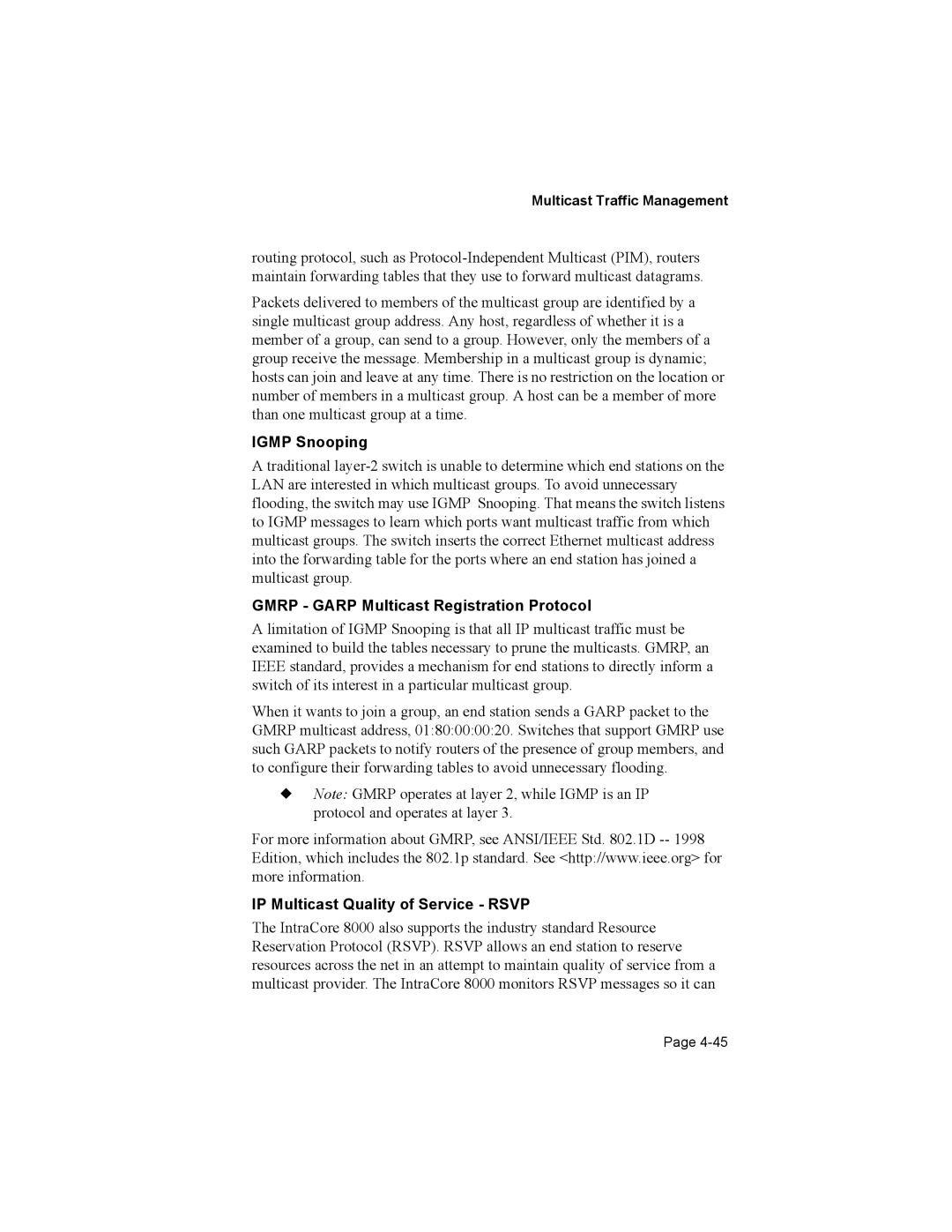Multicast Traffic Management
routing protocol, such as
Packets delivered to members of the multicast group are identified by a single multicast group address. Any host, regardless of whether it is a member of a group, can send to a group. However, only the members of a group receive the message. Membership in a multicast group is dynamic; hosts can join and leave at any time. There is no restriction on the location or number of members in a multicast group. A host can be a member of more than one multicast group at a time.
IGMP Snooping
A traditional
GMRP - GARP Multicast Registration Protocol
A limitation of IGMP Snooping is that all IP multicast traffic must be examined to build the tables necessary to prune the multicasts. GMRP, an IEEE standard, provides a mechanism for end stations to directly inform a switch of its interest in a particular multicast group.
When it wants to join a group, an end station sends a GARP packet to the GMRP multicast address, 01:80:00:00:20. Switches that support GMRP use such GARP packets to notify routers of the presence of group members, and to configure their forwarding tables to avoid unnecessary flooding.
KNote: GMRP operates at layer 2, while IGMP is an IP protocol and operates at layer 3.
For more information about GMRP, see ANSI/IEEE Std. 802.1D
IP Multicast Quality of Service - RSVP
The IntraCore 8000 also supports the industry standard Resource Reservation Protocol (RSVP). RSVP allows an end station to reserve resources across the net in an attempt to maintain quality of service from a multicast provider. The IntraCore 8000 monitors RSVP messages so it can
Page
